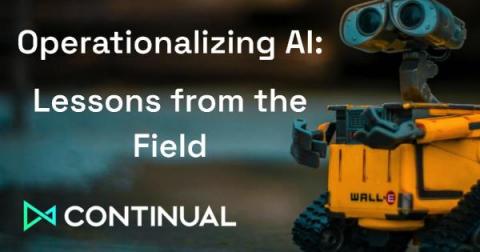Systems | Development | Analytics | API | Testing
%term
Operationalizing AI: Lessons from the Field
A casual stroll through recent tech headlines in the past few years makes two things abundantly clear: investment in AI is at an all-time high, and companies really struggle to get value out of AI technology. At first glance, these ideas seem to be at odds with each other: why consider investing in a field that hasn’t lived up to the hype? If you dig into the details, you’ll notice that a gap exists between the development and production use of AI in many companies.
Real-Time Anomaly Detection: Solving Problems and Finding Opportunities
Success in today’s high-velocity business environments means having the correct information to make the right decisions at the right time. As marketplaces grow more competitive and customer expectations continually rise, the “right time” is often real-time. Every transaction generates a plethora of data. Anomalies within your company’s data set can represent opportunities and threats to the business.
Top .NET Developer Skills According to Tech Leaders and Experts
Microsoft’s.NET Framework is incredibly popular, and its widespread use is one of the reasons C# is gaining ground as one of the most popular and most-used programming languages. What’s more, .NET Core, a modular, open-source (check out the code on GitHub) development stack that’s already used by ASP.NET and.NET Native, is quickly gaining speed, which will heavily influence the demand for top.NET developer skills.
5 Secrets to Integrating Snowflake
Integrating Snowflake with MS SQL Server using DreamFactory
How to Gain Greater Confidence in your Climate Risk Models
We are just over one week until the UN Climate Change Conference of the Parties, COP26 convenes in Glasgow. As governments gather to push forward climate and renewable energy initiatives aligned with the Paris Agreement and the UN Framework Convention on Climate Change, financial institutions and asset managers will monitor the event with keen interest.
Leveraging Automation Technologies for Data Governance
Modern Data Foundation for AI-Driven Results The following is Part II of a three-part series. In Part I of this series, I noted the following: “With just a few clicks on my smart device, I can review data on every place I’ve been, how much I spent, each step I took, what the weather was like and who I was with. Businesses collect the same abundance of data. However, are we getting the benefit and insights from what’s collected?











